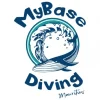The Best Diving sites in Mauritius

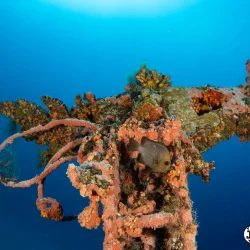
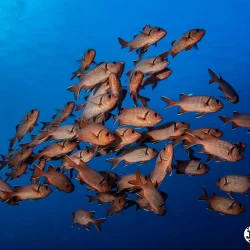


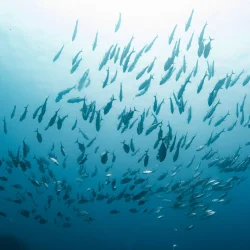
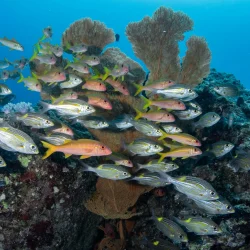
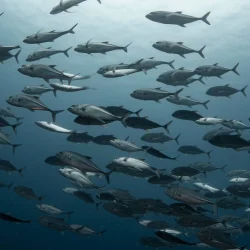
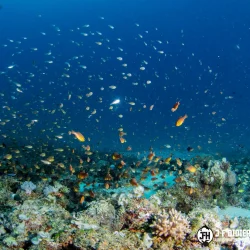

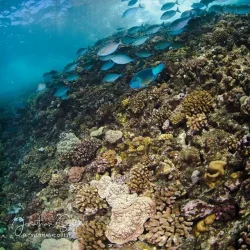
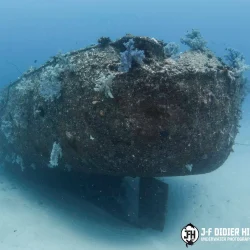
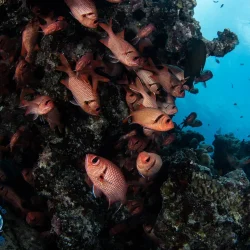

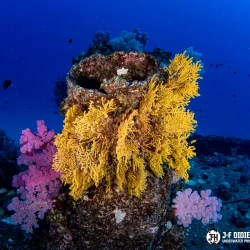
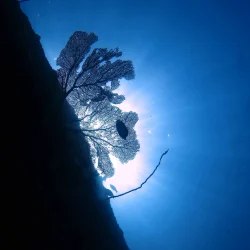
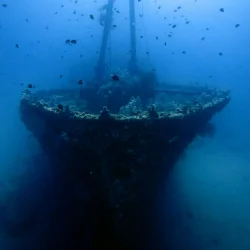
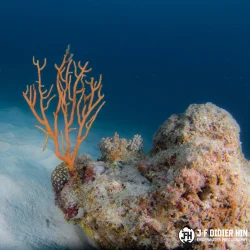
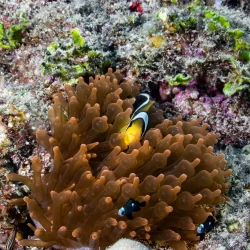
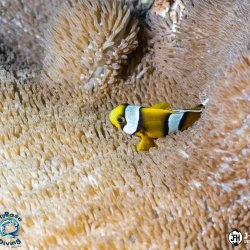
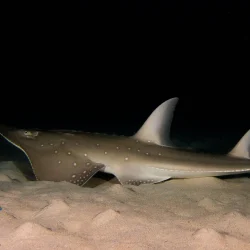
1. Confetti Bay – Coin de Mire Island
Confetti Bay, nestled on Coin de Mire Island (Gunner’s Coin), offers a sheltered dive site that is well protected from currents, with depths ranging from 2 meters to 22 meters. This breathtaking underwater paradise is perfect for everyone, from beginners (bubblemakers) and experienced divers to non-divers (snorkelers). The bay boasts a diverse array of marine life, including triggerfish, stonefish, parrotfish, moray eels and stingrays, making it a must-visit for anyone seeking to explore vibrant ecosystems at varying depths.
2. Djabeda Wreck – Coin de Mire Island
Since 1998, Djabeda has rested upright at a depth of 34 meters (112 feet) off the coast of Coin de Mire Island. This large Japanese fishing boat, deliberately sunk, measures around 44 meters (144 feet) in length. Djabeda is one of the top wreck dives in Mauritius, thriving with both soft corals and an abundance of marine life, including schools of fish, honeycomb eels, and tuna. Each year, it also attracts a large group of whiprays, with numbers ranging from 15 to 20. Though it was once popular for wreck penetration, the structure’s recent deterioration has made it unsafe to enter.
3. Carpenter – Coin de Mire Island
Carpenter, located just off Coin de Mire Island, offers an impressive dive with unique and breathtaking topography, making it a must-visit for divers in the area. This site features sweeping walls, caverns, and exciting swim-throughs. The strong currents generated by the site’s position at the peak of the island draw a diverse range of marine life, including stunning schools of kingfish, scorpionfish, stonefish and barracuda. Carpenter periodically draws nurse sharks, who slumber inside the openings in the walls, to depths of 10 to 24 meters.
4. Shamenta Reef – Grand Bay
Shamenta, a reef stretching from 18 to 30 meters, is a known cleaning station for stingrays, whiprays, and guitarsharks, and it often sees visits from large green turtles. Famous for its vibrant reef, Shamenta also has the remnants of a bicycle, now a haven for a multitude of tiny marine creatures. Divers can enjoy a multi-level dive at Shamenta, finishing at the nearby Turtle Rocks, another spectacular site at a depth of 12 meters.
5. Ti corail -Pereybere
Ti Corail is a stunning small reef, aptly named for its abundance of small corals in Creole. Despite its size, the reef is teeming with a diverse array of fish, including blue-banded snapper, ribbon moray, giant moray eels, eagle rays, stingrays, rhinopias, frogfish, and stargazers. The reef’s depth ranges from 14m to 18m, making it an excellent spot for macro photography.
Minimum depth: 14m
Maximum depth: 18m
Recommended for macro photography.
6. Merville Patches – Grand Bay
Another fantastic macro dive site for divers of all levels is Merville Patches, renowned for its rich diversity. Both beginners and experienced divers can enjoy sightings of eagle rays, turtles, giant moray eels, and numerous tiny creatures, including seahorses.
Minimum depth: 10 meters
Maximum depth: 14 meters
7. Grand Baie Aquarium
Grand Baie Aquarium, a renowned dive site with a minimum depth of 10 meters, is ideal for both beginners and experienced divers. The canyons here are teeming with vibrant marine life, including lobsters, shrimps, and stonefish, all making their homes within the canyon walls. The site extends to depths of 18 meters and sometimes draws visits from rays, ghost pipefish, turtles, and porcupinefish.
8. Turtle rock - Grand Baie
Formed from lava, Turtle Rock consists of massive lava rocks surrounded by a sandy bottom at depths of 14-20 meters. It is home to green turtles (Chelonia mydas). Giant stingrays, schools of batfish, kingfish, and occasionally manta rays can be spotted there. Sometimes strong currents occur, making it an exciting location for drift dives.
Minimum depth: 12 meters
Maximum depth: 20 meters
Recommended for open water divers and drift divers.
9. Silver Star Wreck – Grand Bay
Intentionally sunk in 1992 to form an artificial reef, the Silver Star is located on a deep reef at depths ranging from 33 to 39 meters (164 to 262 feet), making it ideal for Deep and Wreck Divers as it offers numerous opportunities for penetration. Over the years, the wreck has become a haven for marine life, attracting species such as batfish (platax), kingfish, turtles, stingrays, and eagle rays.
10. Waterlily & Emily Wreck – Trou aux Biches
Emily and Waterlily are two barges lying side by side, blanketed in vibrant soft corals and teeming with diverse marine life, including bluestripe snappers, moorish idols, and huge lionfish. Intentionally sunk in the early 1980s, these barges rest at a depth of 24 meters and are easy to explore, making them perfect for anyone looking to spark a passion for wreck diving.
11. KT Mawar Wreck – Trou aux Biches
The KT Mawar wreck, which was intentionally sunk in 2018, is a hidden gem for both divers and freedivers. Lying on its side on the sandy bottom, some parts of this wreck remain relatively unexplored. It features a massive propeller and is home to giant frogfish, vibrant soft pink corals, and a variety of marine life such as kingfish. With depths ranging from 12 to 24 meters, this site is ideal for PADI Advanced Course training, Wreck Specialty Course, or simply an engaging wreck dive experience!
12. Stella Maru wreck – Trou aux Biches
The Stella Maru, deliberately sunk almost 40 years ago, has evolved into a bustling artificial reef. Situated at depths between 18 and 25 meters, this wreck has become a popular dive site, drawing in many divers, including open water divers, despite wrecks typically being more suited for those with advanced certifications. The wreck teems with diverse marine life, including an abundance of porcupinefish, frogfish, and a resident giant moray eel that has become so accustomed to divers, it’s almost domesticated.
13. Shark Arena (La Fosse) /Snake Canyon – Snake Island
The Shark Arena, situated in the exposed area of Snake Island, can be a challenging dive due to the huge waves crashing against the island. At its base, a shallow canyon often feels like a washing machine, with strong current and surge. In the arena, divers frequently encounter 15-20 grey reef sharks and sometimes a large barracuda at the entrance and swimming away from the arena reveals some impressive drop-offs.
Minimum depth: 10 meters
Maximum depth: 20 meters
Boat trip: 1hr 15min
Recommendation: seasick pills
14. Shark Cathedral – Round Island
Cathedral of Snake Island, situated 20 kilometers off the coast of Mauritius, features three prominent rock formations that nearly break the surface, visible as waves crash and create foam around them. Divers are dropped off at the breaking waves, where visibility is often crystal clear. The rock formations resemble a chimney, giving the site its name, “Cathedral.”
At depths of 18-20 meters, divers frequently encounter grey reef sharks, soldierfish, and occasionally kingfish. Venturing beyond the Cathedral to the other two outcropping reefs reveals a sudden drop-off, with the seabed visible around 70 meters below.
Minimum depth: 18 meters
Maximum depth: 70 meters
Boat trip: 1hr 15min
Recommendation: seasick pills
15. Cathedral - Flic en flac
Along the west coast of Mauritius, divers can explore The Cathedral, a site with boulders and drop-offs formed by lava flow. A massive boulder intersects a drop-off, creating an underwater chamber that descends to 28 meters. The area has various caves and chimneys, sheltering moray eels, lobsters, shrimps, stingrays, nocturnal fishes, and, in winter, whitetip reef sharks.
Minimum depths: 12 meters
maximum depth: 28 meters
Recommended for both open water divers and advanced.
16. Rempart Serpent – Flic en Flac
Surrounded by a sandy bottom, Snake Reef is a unique dive site named for its snake-like rock formation. Despite being only about 30 meters long and at a depth of 25-27 meters, this site boasts impressive marine life diversity. As a cleaning station for wrasses and shrimp, it attracts various stingrays, turtles, trevallies, sharks and barracudas. Sea slugs and nudibranchs are found here, along with rare species such as Rhinopias, ghost pipefish, and stargazers.
A nitrox certification is recommended to fully appreciate the dive without no-decompression limits.
Maximum depth: 27 meters
17. Belle Mare Passe - Belle Mare
15m max. For thrill-seekers, the Pass of Belle Mare provides one of the swiftest drift dives on the east coast.
18. Seafan Valley - Belle Mare
If drifting above a valley of giant gorgonians intrigues you, Sea Fan Valley is a must-visit dive site. Starting at 20 meters (52 feet), you’ll explore this vibrant underwater landscape to depths of up to 28 meters (100 feet). Expect to see a variety of tropical fish, kingfish, rays, with the possibility of encountering trevallies and huge grouper.
